Intel to Develop Discrete GPUs, Hires Raja Koduri as Chief Architect & Senior VP
by Ryan Smith on November 8, 2017 5:15 PM EST- Posted in
- GPUs
- Intel
- Raja Koduri
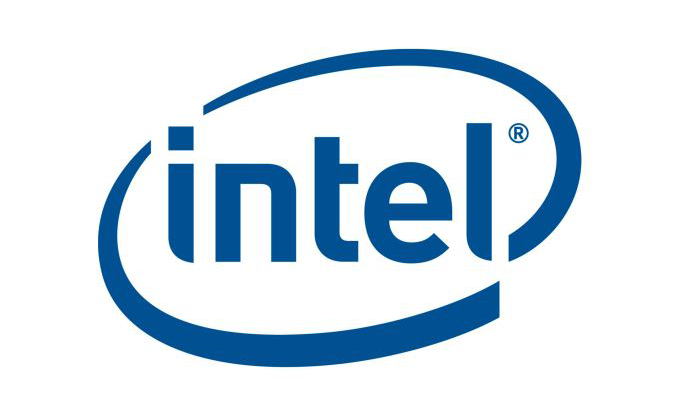
On Monday, Intel announced that it had penned a deal with AMD to have the latter provide a discrete GPU to be integrated onto a future Intel SoC. On Tuesday, AMD announced that their chief GPU architect, Raja Koduri, was leaving the company. Now today the saga continues, as Intel is announcing that they have hired Raja Koduri to serve as their own GPU chief architect. And Raja's task will not be a small one; with his hire, Intel will be developing their own high-end discrete GPUs.
Starting from the top and following yesterday’s formal resignation from AMD, Raja Koduri has jumped ship to Intel, where he will be serving as a Senior VP for the company, overseeing the new Core and Visual Computing group. As a chief architect and general manager, Intel is tasking Raja with significantly expanding their GPU business, particularly as the company re-enters the discrete GPU field. Raja of course has a long history in the GPU space as a leader in GPU architecture, serving as the manager of AMD’s graphics business twice, and in between AMD stints serving as the director of graphics architecture on Apple’s GPU team.
Meanwhile, in perhaps the only news that can outshine the fact that Raja Koduri is joining Intel, is what he will be doing for Intel. As part of today’s revelation, Intel has announced that they are instituting a new top-to-bottom GPU strategy. At the bottom, the company wants to extend their existing iGPU market into new classes of edge devices, and while Intel doesn’t go into much more detail than this, the fact that they use the term “edge” strongly implies that we’re talking about IoT-class devices, where edge goes hand-in-hand with neural network inference. This is a field Intel already plays in to some extent with their Atom processors on the GPU side, and their Movidius neural compute engines on the dedicated silicon sign.
However in what’s likely the most exciting part of this news for PC enthusiasts and the tech industry as a whole, is that in aiming at the top of the market, Intel will once again be going back into developing discrete GPUs. The company has tried this route twice before; once in the early days with the i740 in the late 90s, and again with the aborted Larrabee project in the late 2000s. However even though these efforts never panned out quite like Intel has hoped, the company has continued to develop their GPU architecture and GPU-like devices, the latter embodying the massive parallel compute focused Xeon Phi family.
Yet while Intel has GPU-like products for certain markets, the company doesn’t have a proper GPU solution once you get beyond their existing GT4-class iGPUs, which are, roughly speaking, on par with $150 or so discrete GPUs. Which is to say that Intel doesn’t have access to the midrange market or above with their iGPUs. With the hiring of Raja and Intel’s new direction, the company is going to be expanding into full discrete GPUs for what the company calls “a broad range of computing segments.”
Reading between the lines, it’s clear that Intel will be going after both the compute and graphics sub-markets for GPUs. The former of course is an area where Intel has been fighting NVIDIA for several years now with less success than they’d like to see, while the latter would be new territory for Intel. However it’s very notable that Intel is calling these “graphics solutions”, so it’s clear that this isn’t just another move by Intel to develop a compute-only processor ala the Xeon Phi.
NVIDIA are at best frenemies; the companies’ technologies complement each other well, but at the same time NVIDIA wants Intel’s high-margin server compute business, and Intel wants a piece of the action in the rapid boom in business that NVIDIA is seeing in the high performance computing and deep learning markets. NVIDIA has already begun weaning themselves off of Intel with technologies such as the NVLInk interconnect, which allows faster and cache-coherent memory transfers between NVIDIA GPUs and the forthcoming IBM POWER9 CPU. Meanwhile developing their own high-end GPU would allow Intel to further chase developers currently in NVIDIA’s stable, while in the long run also potentially poaching customers from NVIDIA’s lucrative (and profitable) consumer and professional graphics businesses.
To that end, I’m going to be surprised if Intel doesn’t develop a true top-to-bottom product stack that contains midrange GPUs as well – something in the vein of Polaris 10 and GP106 – but for the moment the discrete GPU aspect of Intel’s announcement is focused on high-end GPUs. And, given what we typically see in PC GPU release cycles, even if Intel does develop a complete product stack, I wouldn’t be too surprised if Intel’s first released GPU was a high-end GPU, as it’s clear this is where Intel needs to start first to best combat NVIDIA.
More broadly speaking, this is an interesting shift in direction for Intel, and one that arguably indicates that Intel’s iGPU-exclusive efforts in the GPU space were not the right move. For the longest time, Intel played very conservatively with its iGPUs, maxing out with the very much low-end GT2 configuration. More recently, starting with the Haswell generation in 2013, Intel introduced more powerful GT3 and GT4 configurations. However this was primarily done at the behest of a single customer – Apple – and even to this day, we see very little OEM adoption of Intel’s higher performance graphics options by the other PC OEMs. The end result has been that Intel has spent the last decade making the kinds of CPUs that their cost-conscious customers want, with just a handful of high-performance versions.
I would happily argue that outside of Apple, most other PC OEMs don’t “get it” with respect to graphics, but at this juncture that’s beside the point. Between Monday’s strongly Apple-flavored Kaby Lake-G SoC announcement and now Intel’s vastly expanded GPU efforts, the company is, if only finally, becoming a major player in the high-performance GPU space.
Besides taking on NVIDIA though, this is going to put perpetual underdog AMD into a tough spot. AMD’s edge over Intel for the longest time has been their GPU technology. The Zen CPU core has thankfully reworked that balance in the last year, though AMD still hasn’t quite caught up to Intel here on peak performance. The concern here is that the mature PC market has strongly favored duopolies – AMD and Intel for CPUs, AMD and NVIDIA for GPUs – so Intel’s entrance into the discrete GPU space upsets the balance on the latter. And while AMD is without a doubt more experienced than Intel, Intel has the financial and fabrication resources to fight NVIDIA, something AMD has always lacked. Which isn’t to say that AMD is by any means doom, but Intel’s growing GPU efforts and Raja’s move to Intel has definitely made AMD’s job harder.
Meanwhile, on the technical side of matters, the big question going forward with Intel’s efforts is over which GPU architecture Intel will use to build their discrete GPUs. Despite their low performance targets, Intel’s Gen9.5 graphics is a very capable architecture in terms of features and capabilities. In fact, prior to the launch of AMD’s Vega architecture a couple months back, it was arguably the most advanced PC GPU architecture, supporting higher tier graphics features than even NVIDIA’s Pascal architecture. So in terms of features alone, Gen9.5 is already a very decent base to start from.
The catch is whether Gen9.5 and its successors can efficiently scale out to the levels needed for a high-performance GPU. Architectural scalability is in some respects the unsung hero of GPU architecture design, as while it’s kind of easy to design a small GPU architecture, it’s a lot harder to design an architecture that can scale up to multiple units in a 400mm2+ die size. Which isn’t to say that Gen9.5 can’t, only that we as the public have never seen anything bigger than the GT4 configuration, which is still a relatively small design by GPU standards.
Though perhaps the biggest wildcard here is Intel’s timetable. Nothing about Intel’s announcement says when the company wants to launch these high-end GPUs. If, for example, Intel wants to design a GPU from scratch under Raja, then this would be a 4+ year effort and we’d easily be talking about the first such GPU in 2022. On the other hand, if this has been an ongoing internal project that started well before Raja came on board, then Intel could be a lot closer. Given what kind of progress NVIDIA has made in just the last couple of years, I can only imagine that Intel wants to move quickly, and what this may boil down to is a tiered strategy where Intel takes both routes, if only to release a big Gen9.5(ish) GPU soon to buy time for a new architecture later.
In directing these tasks, Raja Koduri has in turn taken on a very big role at Intel. Until recently, Intel’s graphics lead was Tom Piazza, a Sr. Fellow and capable architect, but also an individual who was never all that public outside of Intel. By contrast, Raja will be a much more public individual thanks to the combination of Intel’s expanded GPU efforts, Raja’s SVP role, and the new Core and Visual Computing group that has been created just for him.
For what Intel is seeking to do, it’s clear why they picked Raja, given his experience inside and outside of AMD, and more specifically, with integrated graphics at both AMD and Apple. The flip side to that however is that while Apple’s graphics portfolio boomed under Raja during his time at the company, his most recent AMD stint didn’t go quite as well. AMD’s Vega GPU architecture has yet to live up to all of its promises, and while success and failure at this level is never the responsibility of a single individual, Intel will certainly be looking to have a better launch than Vega. Which, given the company’s immense resources, is definitely something they can do.
But at the end of the day, this is just the first step for Intel and for Raja. By hiring an experienced hand like Raja Koduri and by announcing that they are getting into high-end discrete GPUs, Intel is very clearly telegraphing their intent to become a major player in the GPU space. Given Intel’s position as a market leader it’s a logical move, and given their lack of recent discrete GPU experience it’s also an ambitious move. So while this move stands to turn the PC GPU market as we know it on its head, I’m looking forward to seeing just what a GPU-focused Intel can do over the coming years.
Source: Intel



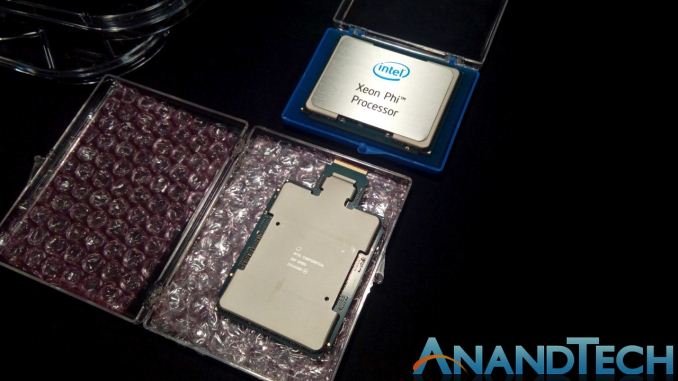
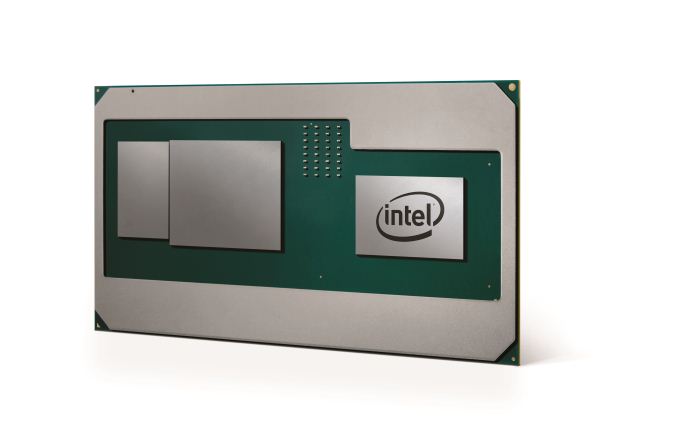
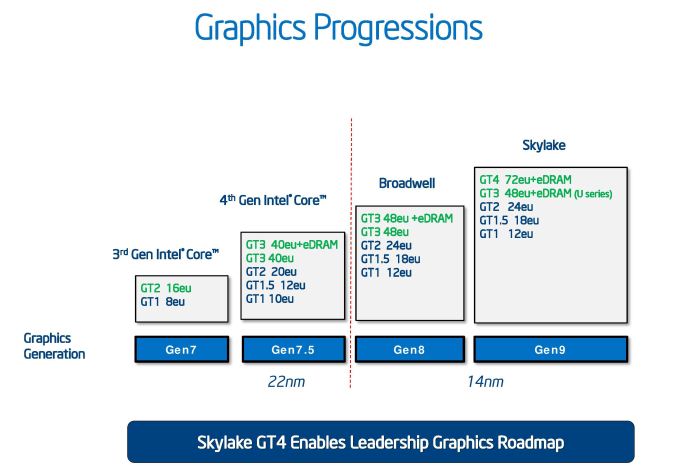
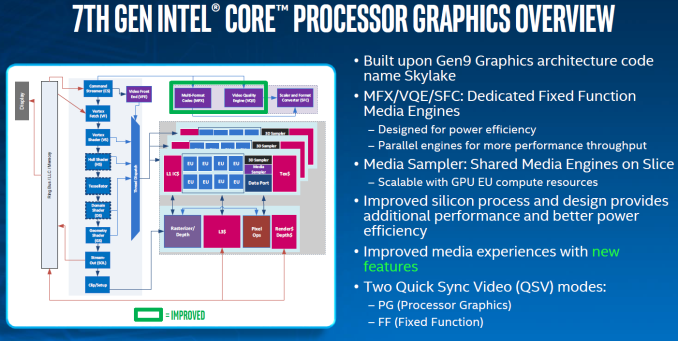








200 Comments
View All Comments
peevee - Friday, November 10, 2017 - link
It is. But the executives who hired him needed to protect their behinds in case of a failure. "But we hired the best, with proven track record, blablabla".Santoval - Saturday, November 11, 2017 - link
I thought Intel's GPU issues (and those of the GPU business by and large) was not one of more capable lead architects, resources and manufacturing prowess, but one of patents, since almost all GPU patents are owned by companies other than Intel. I also thought that Intel's iGPUs since at least 2011 were based on an Nvidia patent cross-licensing deal, which lapsed in April 2017 and was not renewed. So on what patents will their discrete GPUs and new iGPUs be based? Will they license patents from AMD, ARM, Imagination (PowerVR) or renew their Nvidia deal? I even wonder how they are apparently OK with their *current* iGPUs being sold, since their Nvidia deal lapsed. As far as I know their deal with AMD did not involve any patents but they simply bought certain GPUs from them for their mid-power CPUs (largely intended for Macs).Vlad_Da_Great - Saturday, November 11, 2017 - link
@santoval. Both AMD and NVDA. The problem is NVDA CAN NOT sue for the next close to 10-15 years. Intel was and will never renew their licensing agreement with NVDA. Time for them to go in the $2 per share zone. Just SELL.tn_techie - Sunday, November 12, 2017 - link
Intel had a 1.5 B$ 6-year litigation-settlement cross-licensing agreement with Nvidia that expired on March 31st, 2017. And it was widely assumed that the expiration of this agreement implicated that Intel would no longer have access to Nvidia's licensed IP portfolio. In other words, Intel would no longer be allowed to use Nvidia's patents in its own home-made iGPs, starting from April 2017.In reality, that deal granted Intel the right to use Nvidia's IP portfolio until the patents expiration, and not the licensing deal expiration.
"The term of the patent cross-license agreement continues until the expiration of the last to expire of the licensed patents."
So basically, although the licensing agreement did expire, Intel has the right to continue to use Nvidia's patents that were filed on or before March 31st 2017, indefinitely and in perpetuity, since any patent is up-for-grabs once it expires.
However, what the licensing agreement expiration means is that Intel won't have access to Nvidia's new patents that were filed on or after April 1st 2017.
tamalero - Monday, November 13, 2017 - link
I guess Raja couldnt pull a Jensen Huang by wanting complete control of the graphic division and Lisa told him to GTFO after he failed to deliver.corinthos - Friday, November 17, 2017 - link
At long last, the Larribee dream will come TRUE!finefunny - Wednesday, November 22, 2017 - link
Are AMD or Intel Processors a Better Choice for My Needs?In any processor comparison, it is important to determine what you're looking for out of a processor. Are you seeking speed? Graphics performance? Affordability? Flexibility? Do you play games, primarily, or are you seeking a simple processor to allow for multi-tasking while browsing the Internet? Knowing the answers to these questions can help you decide which processor is right for you.
If you are looking for a more cost-effective processor, AMD processors may be the best bet. For students, budget gamers, and individuals with straight-forward computing needs, AMD processors are a great choice – they are powerful and fast enough for most while undercutting competitor pricing. And yet, you give up little when going with AMD chips. They can be "overclocked" for increased speed, provide robust and vibrant graphics, and are available in multi-core setups for multithreaded performance.
On the higher end of the spectrum, Intel processors shine. If you are seeking performance that is at the upper range of the market, there is sure to be an Intel chip that suits your needs. You may pay more for it, and you may give up flexibility for this performance, but the processor itself will provide you with lightning speed, incredible capability, and beautiful graphics. In terms of outright power, it's hard to beat Intel processors.
laptopcharger - Monday, November 27, 2017 - link
we can see that by hiring an experienced hand like Raja Koduri and by announcing that they are getting into high-end discrete GPUs they are running towards a great lead.If you have any issue regarding your LAPTOP CHARGER just visit the site:<a href="https://laptopcharger.ae/"> LAPTOP CHARGER</a>
mariya123 - Monday, December 4, 2017 - link
very informative post. I really appreciate your post. thanks for sharing keep it up.if you are looking for technical solution related with belkin wireless router so please go to my blog
<a href="https://fixingblog.com/how-to-setup-belkin-wireles... belkin wireless setup </a>